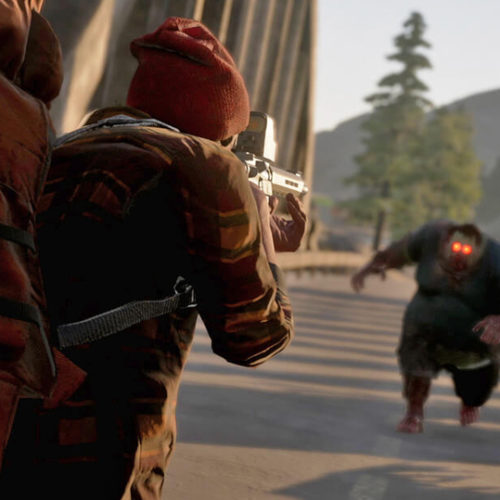Zombie spreadsheets.
The original State of Decay was a brilliant game buried under a lot of technical issues. It was one part zombie survival and one part base building and relationship manager. Once I peeled back the layers of problems, I was addicted. So when Undead Labs announce a sequel was on the way my hopes for a more polished experience rose. State of Decay 2 seems more intent on expanding the experience than refining it. The end result is a mixed bag of brilliant ideas and systems, with some awkward technical issues still lingering.
The sequel starts off by offering players a host of randomized survivors from a pool. I started off with two characters that basically break down (some) of the game’s mechanics. Things really kick off once I got my first base constructed. Then the real game begins. There are systems upon systems found in State of Decay 2. So much so, that I almost needed a spreadsheet to keep track of them all. The core philosophy though is keeping survivors alive and building a thriving community.

MSRP: $29.99 (free with Game Pass)
Platforms: XB1 (reviewed), PC
Price I’d Pay: $29.99
The hook of State of Decay is the tension. Characters can die, and when they do they are gone forever. This can be devastating when it happens. Imagine spending countless hours building up their stats only to lose them in some stupid manner. It sucks, but it happens, and that is what makes this game so interesting. The fact that death is permanent forces players to really think about the decisions they make.
There is a lot to keep track of here, even more so than the first game. Base building is expanded. Players can build a ton of different stations for their characters. It is the definition of micro-management. Menus upon menus and each one takes in-game time to build. As I mentioned it almost requires an outside resource to keep track of it all. I spent just as much time planning and building as I did fighting zombies. That is something to consider before diving into this game. It is just as much management, as it is survival.
State of Decay 2 feels like a giant sandbox. I never felt like there was an overarching narrative or end goal. The game just goes on and on without much purpose, and I kind of like that. I could hop in for 20 minutes here and there and just accomplish a few tasks. Gamers looking for something more narrative-driven will be disappointed. Still the depth of these systems is incredible. Building base morale and promoting leaders from within, then seeing them die is demoralizing. Still there is something addictive about the process.
Combat feels good in its simplicity. Melee fights rarely graduate past button mashing and the gunplay is standard fare. Again it is everything underneath that makes it interesting. Still being careless can carry a heavy cost, so it is best to plan attacks and runs to ensure I didn’t lose my main characters.
The skill system is based upon what I did. So running would increase my stamina and so on. I enjoy this system as it makes sense to upgrade how I play. Randomized survivors also come with their own unique set of skills. These are important to note before bringing them into your group. No need for everyone to have a medical background as it limits advancing other, equally important areas. Base space is limited as well, which means a lot of times I had to turn people away. Like most zombie apocalypse scenarios, the humans are often more dangerous than the monsters.
Another big addition to this sequel is online co-op play. Players can now bring their survivors into the worlds of other players. While they won’t be progressing their own world, they can bring back supplies as well as upgrading their characters. Take note though, the same rules apply to co-op. If I lost a character in a friend’s game, they were lost in mine as well. It is a neat system that works, but it also comes with its fair share of problems.
State of Decay 2 brings a lot of the same technical issues the first game had – weird clipping issues and funky glitches that can lead to death. While these are funny and entertaining in some games, when they result in losing a character with hours of progress, it can be annoying. I didn’t see nearly as much in the sequel as the original, but it did happen. It sucks and I hope the team at Undead Labs patches some of this up as the game goes on.

Visually the game supports all the bells and whistles of the Xbox One X. HDR and 4K support are here, but the game does run at 30fps. It is not perfect. Some of the animations look just bad, but the world benefits from the added horsepower. The lighting is stellar, although it really is pitch black at night. So much so that I would rarely bother doing runs as I could not see enough to feel safe sending out my survivors.
State of Decay 2 feels like a pretty run-of-the-mill sequel. It packs in more while refining less. The addition of co-op is great, I just wish they would have focused more on streamlining and cleaning up some of its technical issues. Still with this game free in Game Pass and only carrying a $30 price tag I feel like it lives up to expectations. For those that enjoyed the original game, this will certainly satisfy. For those that didn’t care for the original’s design, this sequel will not change your mind.
Review copy of game provided by publisher.
